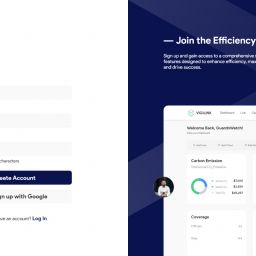What is Labor Forecasting? A Two-Part Equation
In today’s dynamic business environment, effective labor management is crucial for organizations to optimize productivity, control costs, and ensure smooth operations. Labor forecasting plays a vital role in this process. It involves predicting future labor needs based on various factors and data analysis. Labor forecasting is a two-part equation that combines understanding historical trends and leveraging predictive analytics to forecast labor demand and supply. In this article, we will delve into the concept of labor forecasting, its importance, and the two key components that make it a powerful tool for workforce management.
Part 1: Historical Data Analysis
The first part of the labor forecasting equation involves analyzing historical data to identify patterns, trends, and seasonality in labor demand. Here are the key steps involved in this process:
1. Gather Relevant Data
Collect historical labor data, including employee headcounts, work hours, sales or production volumes, customer demand, and any other factors that impact labor requirements. The more accurate and detailed the data, the better the forecasting accuracy.
2. Clean and Organize the Data
Ensure the data is accurate, complete, and free from errors. Remove any outliers or anomalies that may skew the analysis.
3. Identify Patterns and Trends
Analyze the historical data to identify patterns, such as daily, weekly, or seasonal variations in labor demand. Look for recurring trends and anomalies that may affect labor needs, such as holidays, peak seasons, or special events.
4. Quantify Relationships
Determine the relationships between labor demand and various factors like sales, production levels, customer footfall, or other key performance indicators. This analysis helps establish correlations and develop mathematical models for forecasting labor requirements.
5. Develop Forecasting Models
Based on the identified patterns and relationships, develop forecasting models such as time series analysis, regression analysis, or other statistical techniques. These models will help predict future labor demand based on historical data trends.
Part 2: Predictive Analytics
The second part of the labor forecasting equation involves leveraging predictive analytics techniques to estimate future labor supply and assess the availability of resources to meet demand. Here’s how it can be achieved:
1. External Factors Analysis
Consider external factors that may impact labor supply, such as economic conditions, industry trends, labor market dynamics, and demographic changes. These factors help in understanding the broader context and forecasting labor availability.
2. Workforce Planning
Assess the current workforce composition, including the number of employees, skills, experience levels, and potential turnover rates. Analyze historical attrition rates and retirement trends to estimate future workforce supply.
3. Skills Gap Analysis
Identify any skill gaps or shortages within the organization. Determine the skills and competencies required for future roles and assess the availability of talent internally or externally to bridge those gaps.
4. Scenario Planning
Develop multiple scenarios based on different assumptions and potential business outcomes. This helps organizations prepare for various labor demand scenarios and plan accordingly.
5. Continuous Monitoring and Adjustments
Labor forecasting is an iterative process. Continuously monitor the accuracy of forecasts and compare them with actual outcomes. Adjust the forecasting models and techniques based on new data, market trends, and organizational changes to improve accuracy over time.
Importance of Labor Forecasting:
Labor forecasting offers several benefits for organizations, including:
1. Cost Optimization
Accurate labor forecasting helps organizations align labor supply with demand, avoiding overstaffing or understaffing situations. This leads to cost optimization by reducing unnecessary labor expenses or avoiding lost opportunities due to insufficient staffing.
2. Improved Workforce Planning
Labor forecasting enables effective workforce planning by identifying future labor requirements, skill gaps, and succession planning needs. It helps organizations proactively address staffing needs and develop strategies for talent acquisition, training, and development.
3. Enhanced Operational Efficiency
By accurately forecasting labor demand, organizations can ensure optimal staffing levels, reduce bottlenecks, and improve operational efficiency. This leads to smoother workflows, improved productivity, and better customer service.
4. Employee Engagement and Satisfaction
Adequate staffing levels based on accurate labor forecasting contribute to a healthier work-life balance for employees. It reduces stress caused by understaffing and prevents burnout, leading to higher employee engagement and job satisfaction.
Conclusion:
Labor forecasting is a powerful tool that enables organizations to predict and plan for future labor needs effectively. By analyzing historical data, understanding trends, and leveraging predictive analytics, organizations can optimize labor management, reduce costs, improve efficiency, and enhance overall workforce planning. Incorporating labor forecasting into strategic workforce management practices helps organizations stay agile, competitive, and prepared for future labor challenges.


















